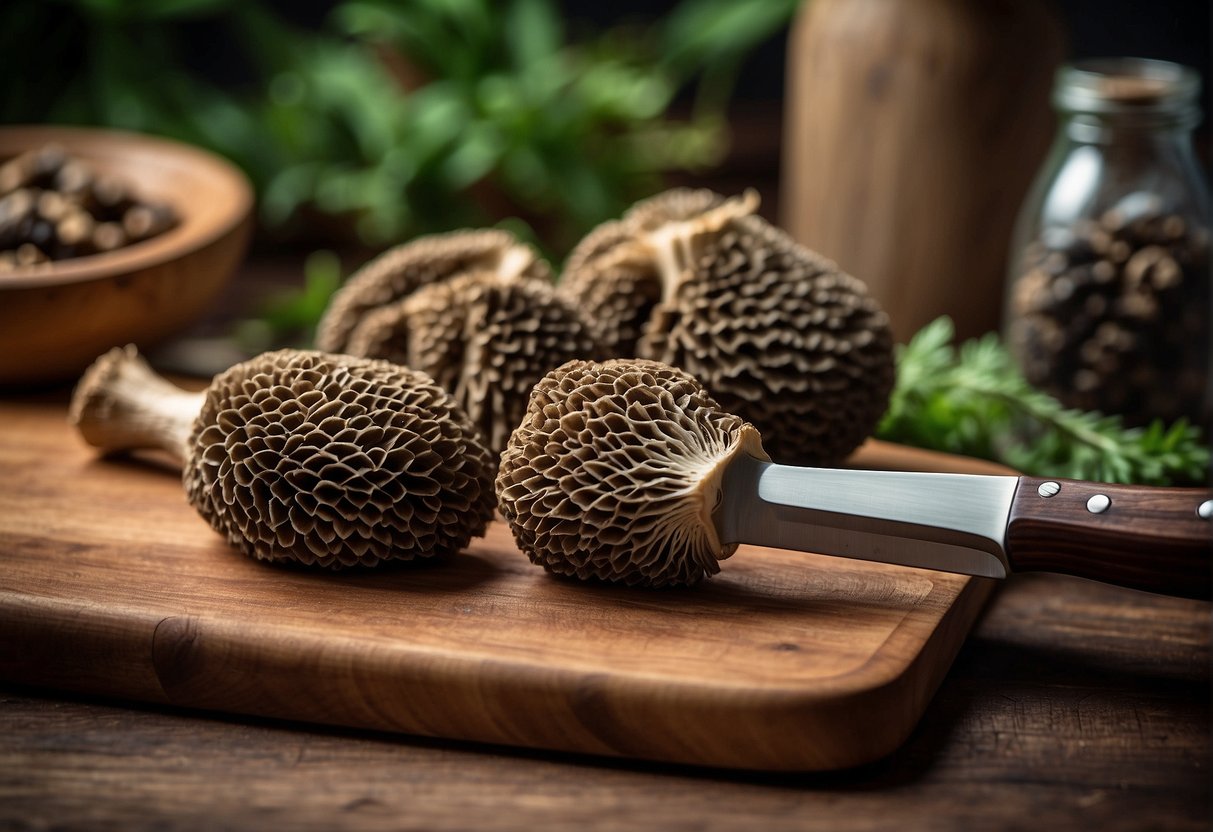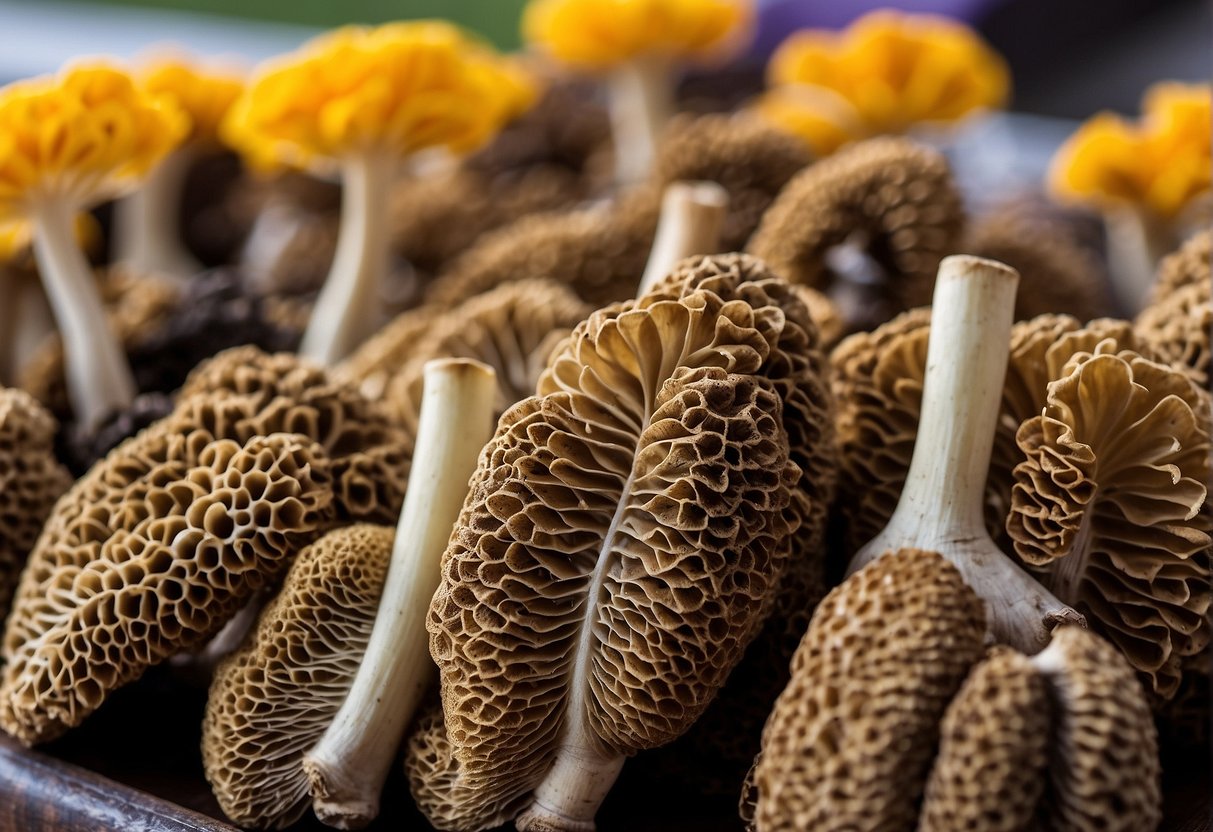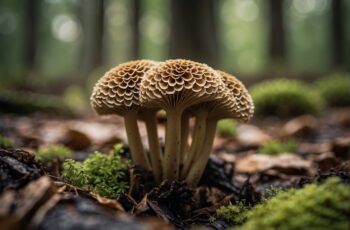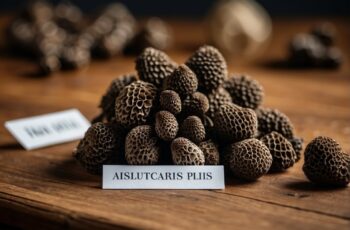Fresh morel mushrooms carry a distinctive earthy flavor that is celebrated by chefs and foragers alike. Considered a prized find in the wild, their unique honeycomb appearance tantalizes the palate and is a sure sign of spring. When you stumble upon morel mushrooms for sale, you’re looking at a product that gourmet cooks highly covet for their meaty texture and nutty flavor.

Foraging for morel mushrooms can be an adventurous outdoor activity, but it requires knowledge of their natural habitat and the right timing. Morels flourish in the wild during springtime, showing up in wooded areas and often thriving in spots where the ground has been disturbed the previous year. Yet, not everyone has the time or expertise to hunt these elusive fungi. Luckily, you can find fresh morel mushrooms for sale from trusted suppliers who bring the experience of harvesting to your kitchen.
When you opt to purchase morel mushrooms, you are bringing a piece of the forest to your culinary creations. Whether you’re looking to sauté them with a hint of garlic and butter or to elevate a risotto, fresh morels can transform a meal with their unique flavors. Remember that with morels, freshness is key, so always look for firm, moist specimens that have been properly transported and stored.
Identifying and Understanding Morels
Before setting out on your next foraging adventure, it’s important that you confidently identify and differentiate the various types of morel mushrooms. Armed with this knowledge, you’ll be better prepared to safely enjoy these wild delicacies.
Characteristics of Morel Mushrooms
Morel mushrooms are easily distinguished by their unique appearance. They sport a honeycomb-like cap, pitted and ridged, which sits atop a relatively thick stem. When you slice one open, you’ll notice the cap and stem are hollow—a key identifier. They’re typically found in woodland settings and are a prize find for any forager.
- Grey morels often emerge first during the morel season and can vary in color from true grey to a yellowish-tan.
- Blonde morels, also known as yellow morels, have a lighter color and may appear later in the season.
- Black morels tend to have a darker, richer color and a denser texture.
Keep in mind that these fungi thrive in moist environments with rich soil, often near dying or dead trees such as elms, ashes, and apples.
Differences Between Morel Varieties
Understanding the subtle differences between morel varieties can enhance your foraging experience. While grey and blonde morels are often found in hardwood forests, black morels prefer the region’s coniferous companions and may often be found in burn sites, where fires have passed through.
- Grey and blonde morels can be similar in shape, but the grey ones usually arrive first with the blonde following as temperatures rise.
- Black morels are also distinct in their texture and flavor, offering a slightly different culinary experience.
Moreover, be vigilant in distinguishing true morels from their toxic look-alikes, namely the “pinecone mushroom” or false morels. True morels have caps that are attached to the bottom of the stem, whereas false morels’ caps hang free like a skirt. Additionally, the green morel is a term sometimes mistakenly applied to false morels due to their color variation, thus highlighting the importance of correct identification.
Remember, your safety is paramount, so familiarize yourself with these characteristics to enjoy natural morels with peace of mind.
Culinary Uses of Fresh Morels

Fresh morels are esteemed by chefs and outdoor enthusiasts alike for their distinctive nutty flavor and versatility in a range of dishes. They are particularly prized during their short spring season and can elevate the simplest meals with their rich taste and texture.
Cooking Techniques for Morels
When you prepare morels, ensure they are thoroughly cleaned as they often harbor forest debris. Once clean:
- Sautéing: For a simple yet sublime experience, sauté morels in butter over medium heat until browned and serve alongside a steak or stirred through scrambled eggs for a woodland breakfast.
- Roasting: Toss morels in oil with a touch of garlic, spread them on a baking sheet, roast them until crispy, and add them to pasta dishes.
Morels in Gourmet Recipes
- Soups and Stews: Add morels to cream-based soups or hearty stews to impart a delicious, earthy depth.
- Gourmet Pairings: Morels pair well with bacon, ramps, and fiddlehead ferns for a true forest-to-table feel. They also complement sauces drizzled over steaks or pasta to enhance the food with their luxurious texture and taste.
Purchasing and Storing Morels
When you’re on the hunt for high-quality morels, knowing where to purchase them and how to store them properly ensures that you can enjoy their unique flavor to the fullest.
Where to Buy Fresh Morels
If you’re keen on savoring the distinctive taste of fresh morels, you have several options available. During their growing season, which typically spans from early spring to late June, you might find these delectable fungi at local farmers’ markets or specialty stores. For those of you who can’t wait for the season or don’t have access locally, online retailers offer a convenient alternative. Websites like GMushrooms and Morelmasters provide an array of organic and GMO-free morel mushrooms. You can easily order these gourmet items and have them shipped directly to your doorstep, sometimes even year-round.
Storing Fresh Morels Properly
Once your morels have arrived, it’s crucial to handle them with care to maintain their exquisite quality. Refrigerate your morels as soon as possible. It’s best to clean them just before you’re ready to use them, as moisture can hasten spoilage. Should you need to clean them, briefly submerge in salt water to dislodge any remnants of nature like small insects or pine needles. Then, gently pat them dry. If you’re not planning to use your morels right away, you can extend their shelf life by storing them in a freezer. Lay them out on a tray, freeze them individually, and then transfer to a freezer-safe container. This will keep your morels in top condition for up to six months, letting you enjoy a taste of the wild long after the season has passed.
Health Benefits and Nutrition

When you’re out in the wild or selecting mushrooms at the market, the allure of morel mushrooms is undeniable. Not only do they offer an elegant touch to your meals with their unique honeycomb appearance, but their nutritional profile is impressively beneficial for your health.
Morel mushrooms are a low-calorie option, with only 31 calories per 100 grams. Despite the low calorie count, they pack a substantial nutritional punch. You’re looking at a substantial dose of vitamin D, essential for maintaining healthy bones and your immune system. In fact, in 100 grams of raw morels, you’ll find 206 IU of vitamin D, an excellent contribution towards your daily needs.
The iron content in morels is nothing short of remarkable. With 12.2 milligrams per 100 grams, you satisfy your daily iron requirement quite easily, which is crucial for your red blood cells and energy levels.
| Nutrient | Amount in 100g of Morels |
|---|---|
| Calories | 31 kcal |
| Vitamin D | 206 IU |
| Iron | 12.2 mg |
As wild mushrooms, morels also bring a breadth of B vitamins, manganese, zinc, and phosphorus to your table. These nutrients support a wide range of bodily functions, from energy production to nerve health.
Your experience with morels doesn’t just satisfy your palate; it’s a wise choice for your overall well-being. The combination of earthy flavors and health benefits ensures that your forays into the world of fungi are not only adventurous but also align with your body’s nutritional needs.


